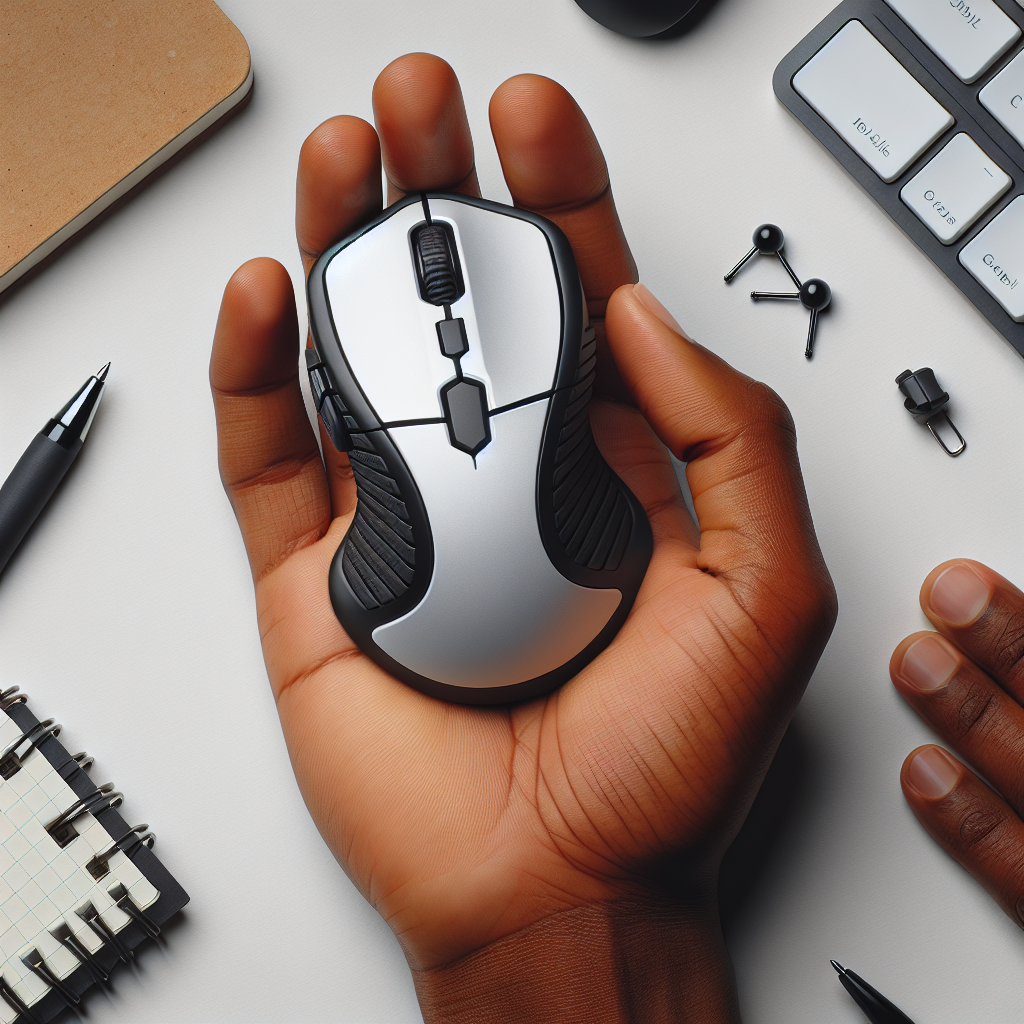In today’s digital age, where a significant portion of work and leisure time involves the use of computers, the importance of ergonomic accessories cannot be overstated. Among these, ergonomic mice have gained substantial attention for their ability to reduce strain and improve user comfort. One notable feature in some ergonomic mice is the inclusion of adjustable angles and grips. But why do some ergonomic mice offer these adjustable components? This article delves into the benefits of these features, the science behind ergonomic design, and how they cater to varied user needs.
The Science of Ergonomics
Ergonomics is the discipline concerned with designing products to fit the user’s needs, enhancing comfort, performance, and productivity. When it comes to computer mice, ergonomic design focuses on reducing strain on the wrist, hand, and forearm. The ultimate objective is to mitigate the risks associated with repetitive strain injuries (RSIs) such as carpal tunnel syndrome and tendinitis.
Benefits of Adjustable Angles
One of the key features of some ergonomic mice is the ability to adjust the angle of the device. Here’s why this feature is beneficial:
- Customization for Individual Comfort: People have different hand sizes and shapes. Adjustable angles allow users to modify the mouse to fit their unique hand structure, providing personalized comfort.
- Reduced Wrist Strain: Traditional mice keep the wrist in a single static position. Adjustable angles can help users maintain a natural wrist posture, reducing tension and strain.
- Improved Circulation: Keeping the wrist and hand in a more natural position can enhance blood circulation, reducing the likelihood of numbness and tingling.
- Enhanced Precision: Some users find that adjusting the mouse angle improves their precision and control, which is particularly beneficial in tasks requiring fine motor skills, such as graphic design and gaming.
The Importance of Adjustable Grips
Adjustable grips are another noteworthy feature in ergonomic mice. Here’s why they are important:
- Enhanced Control: Different tasks may require varied grip styles. For instance, a palm grip offers more comfort for prolonged use, while a claw grip may provide better control for tasks requiring precision.
- Adaptability: An adjustable grip allows users to switch between grip styles depending on their activity, preventing muscle fatigue and discomfort.
- Versatility: Users can adjust the grip to match their hand size and personal preference, making the mouse more versatile for multiple users or varied tasks.
- Health Benefits: A mouse with an adjustable grip can aid in reducing the risks of developing strain injuries by allowing users to frequently change their hand position.
Design Considerations
When designing ergonomic mice with adjustable angles and grips, manufacturers consider several factors to ensure these products effectively meet user needs:
- Material Quality: High-quality materials that provide durability and comfort are essential to ensure the mouse can withstand regular adjustments without compromising on user experience.
- Mechanism Reliability: The adjusting mechanisms must be sturdy and reliable, ensuring that the angles and grips stay in place during use.
- Ease of Adjustment: Users should be able to easily adjust the angles and grips without needing additional tools or exerting excessive effort.
- Weight Balance: Adjustable features should not significantly impact the balance and weight distribution of the mouse, as this could affect precision and ease of use.
Market Examples
Several ergonomic mice with adjustable angles and grips are available on the market. Here are a few notable examples:
| Mouse Model | Adjustable Angles | Adjustable Grips |
|---|---|---|
| Logitech MX Vertical | Yes | No |
| Razer Basilisk | No | Yes |
| Evoluent VerticalMouse 4 | Yes | No |
| Contour Unimouse | Yes | Yes |
Conclusion
Adjustable angles and grips in ergonomic mice are not mere luxury features; they address fundamental ergonomic principles to provide users with customizable comfort and enhanced performance. By understanding the importance of these adjustable components, users can make informed decisions when selecting an ergonomic mouse that best suits their needs. Whether for professional use, gaming, or everyday tasks, investing in an ergonomic mouse with these features can significantly improve user experience and well-being.

